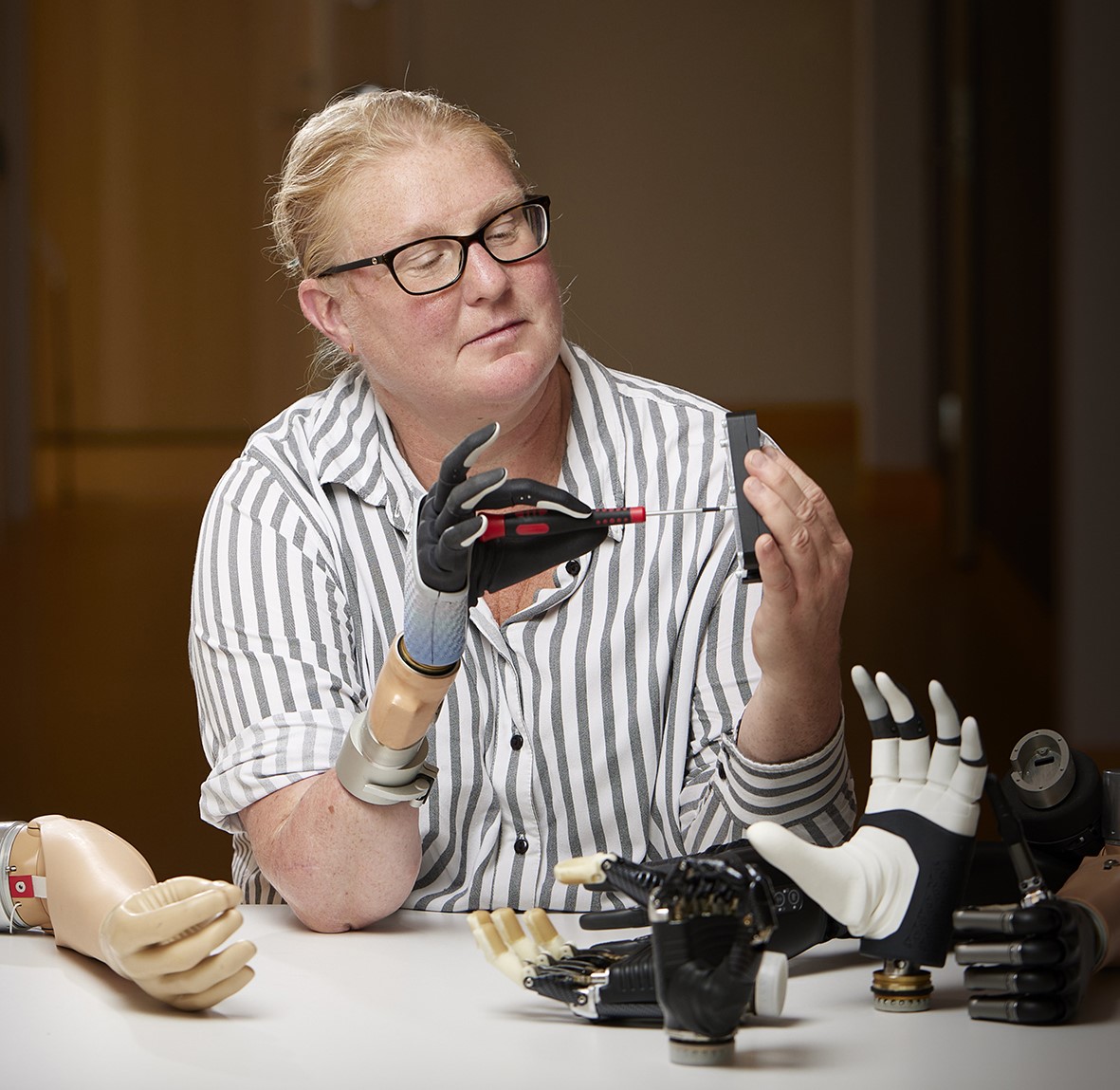A new study tells the story of a woman who received a pioneering bionic hand that’s deeply integrated with her bones, nerves, and muscles. There are still many hurdles to overcome with this type of tech, but this case report shows how it’s already capable of enriching people’s lives.
Karin lost her right arm during a farming accident over 20 years ago. She was given a prosthetic limb, but she found it cumbersome and continued to face problems with excruciating phantom limb pain.
“It felt like I constantly had my hand in a meat grinder, which created a high level of stress and I had to take high doses of various painkillers,” Karin said in a statement.
Just a few years ago, she was offered the opportunity to receive a novel bionic hand that’s surgically modified to closely integrate with her body.
An international team of scientists, surgeons, and engineers developed a new form of human-machine interface that allows for the prosthesis to be directly attached to the user’s skeleton while being hooked up to her nerves and muscles through a network of implanted electrodes.
With the aid of the neuromusculoskeletal implant, the patient can maneuver the prosthetic hand with her mind, allowing her to pick up objects and fiddle her fingers at will.

The bionic hand is capable of some relatively fine motor skills.
Image credit: Ortiz-Catalan et al., Sci. Rob., 2023
Their work has proved to be remarkably successful. Karin has learned to use the bionic hand to help with 80 percent of her everyday tasks and, best of all, she experiences significantly less discomfort.
“[I have] better control over my prosthesis, but above all, my pain has decreased. Today, I need much less medication,” she said.
“For me, this research has meant a lot as it has given me a better life”.
The researchers are equally happy with the results. One of the biggest challenges of the project was melding the natural bone to the artificial hand, which was achieved through osseointegration.
Not only is titanium strong, but it also has properties that allow it to bond with bone matter, creating a sturdy mechanical connection. Utilizing this biocompatibility, the team fused the bionic hand to the two bones of the forearm, the radius and ulna, carefully ensuring they were loaded equally and perfectly aligned.
“Karin was the first person with below-elbow amputation who received this new concept of a highly integrated bionic hand that can be used independently and reliably in daily life. The fact that she has been able to use her prosthesis comfortably and effectively in daily activities for years is a promising testament to the potential life-changing capabilities of this novel technology for individuals facing limb loss,” explained Professor Max Ortiz Catalan, lead researcher and head of neural prosthetics research at the Bionics Institute in Australia, as well as the founder of the Center for Bionics and Pain Research (CBPR) in Sweden.
Karin is one of three patients enrolled in the project, known as DeTOP, which is funded by the EU Commission. Eventually, however, the researchers hope this kind of high-tech prosthetic could be made available for whoever needs it.
“By combining osseointegration with reconstructive surgery, implanted electrodes, and AI [artificial intelligence], we can restore human function in an unprecedented way. The below elbow amputation level has particular challenges, and the level of functionality achieved marks an important milestone for the field of advanced extremity reconstructions as a whole,” commented Professor Rickard Brånemark, research affiliate at MIT, associate professor at Gothenburg University, and CEO of Integrum.
The study is published in the journal Science Robotics.
Source Link: This Woman's Bionic Arm Is Melded To Her Bones And Nervous System